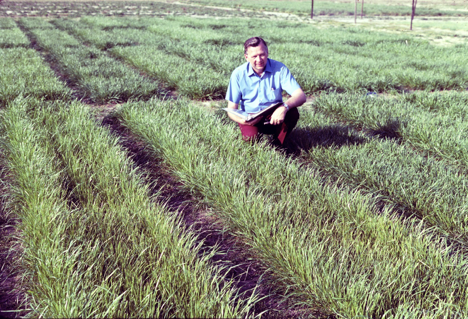
Once a forage-livestock producer has decided to plant a given forage species, he or she will usually find there are several varieties of which seed is available. So how should a person go about deciding which variety to plant? Advice from friends, neighbors, and respected advisors can be helpful, but a review of data from variety trials is of particular value.
Some universities conduct forage variety trials, and such data can easily be accessed via a computer search. Trial data from a nearby location is particularly useful, of course. Unfortunately, there may be few (or perhaps even no) in-state trials that involve a particular forage species of interest. If that is the case, even variety data from a nearby state can provide much insight, although (obviously) the farther the distance from which the data was generated, the less dependable it becomes.
Forage yield data is of particular interest, but variety trials often provide data pertaining to other traits as well. This usually includes distribution of forage growth, and sometimes information such as rate of establishment, insect and/or disease resistance, and length of stand life. (Some trials are designed to impose heavy grazing pressure, which is a major factor affecting stand persistence.)
Aside from any such information a producer gets from reviewing variety trial reports, another factor often ultimately impacts heavily on the final decision as to what variety will be purchased and planted; namely, seed cost. This isn’t surprising since nobody wants to spend any more money than necessary. We all are conditioned to save money whenever possible.
Yet, the decision to plant a particular variety because the seed are less expensive than seed of another variety or varieties can often be a classic case of false economy. The following scenario provides a good example.
Let’s assume a producer has decided to plant a forage crop that is typically seeded at 20 pounds per acre. When he contacts a seed dealer, he finds that there is seed of several varieties available, two of which are of particular interest to the producer. Let’s say that Variety A is priced at $0.50 per pound, while variety B is priced at $1.00 per pound. For many people, variety A would automatically get favorable consideration because of the lower cost. After all, variety B costs twice as much per pound as variety A.
But buying variety A based on the difference in price could easily be a bad decision because variety B may have attributes that will more than compensate for the price difference. Looking at costs of the varieties on a per acre basis, as opposed to a per pound basis, can be of much value. In this hypothetical case, the cost per acre for variety A would be 20 times $0.50, which is $10.00. The cost per acre for variety B would be 20 times $1.00, which is $20.00, or $10.00 more per acre than variety A.
Here is a highly relevant question. How much extra yield per acre, or how much better forage quality, or how much more favorable distribution of growth, or how much longer persistence would be required to compensate for a cost of spending $10.00 more per acre in seed cost? The answer is, “NOT MUCH!”
There is a strong correlation between cost of seed of different varieties and their value in terms of agronomic and grazing animal performance. Purchasing seed of the least expensive variety available will usually result in poorer performance than will occur if a different approach is used. Always planting seed of the most expensive variety probably isn’t a good policy either. If data is available, choosing a variety that has performed particularly well in trials is generally the most economically sound approach.
__________________
Foraging Ahead is a column presented by Ragan & Massey and written by Dr. Don Ball, Professor Emeritus at Auburn University. Dr. Ball is one of the authors of the popular book “Southern Forages,” which can be found via a computer search that uses the words, “Southern Forages, The Fertilizer Institute.”
